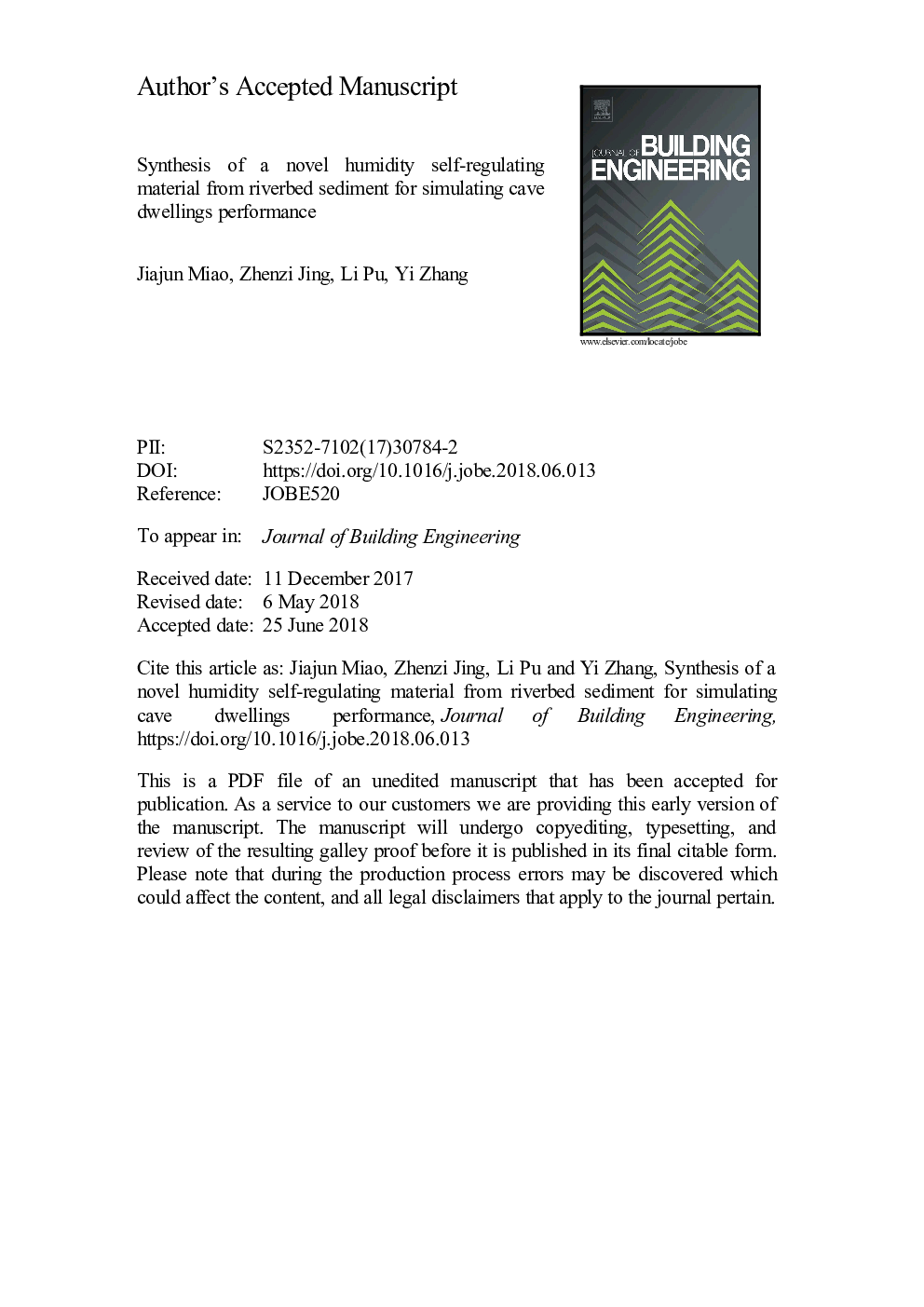| Article ID | Journal | Published Year | Pages | File Type |
|---|---|---|---|---|
| 6749648 | Journal of Building Engineering | 2018 | 23 Pages |
Abstract
With simulation of the cave dwellings' performance of warming in winter and cooling in summer, a humidity self-regulating material was first synthesized with riverbed sediment. A tough and porous building material could be obtained under hydrothermal conditions, and tobermorite formation during hydrothermal process was found to have a capability of improving both strength and porosity of the specimens. The solidified sediment specimens with the molar ratios of CaO to SiO2 (C/S) of 0.4 and 0.8 could enhance the moisture adsorption/desorption capacity evidently. With extra sepiolite addition, the moisture adsorption/desorption and humidity regulating capacities could be further improved due to the coexistence of tobermorite and sepiolite. For example with extra 30 mass% sepiolite addition, the amount of moisture adsorption/desorption increased nearly two times and the RH variation decreased by a factor of two comparable to that of without sepiolite addition. As such, the hydrothermally solidified riverbed sediment can be used as the “cave-dwelling” construction materials (humidity regulating materials) in cities to both improve the comfort and save energy and resources.
Related Topics
Physical Sciences and Engineering
Engineering
Civil and Structural Engineering
Authors
Jiajun Miao, Zhenzi Jing, Li Pu, Yi Zhang,
